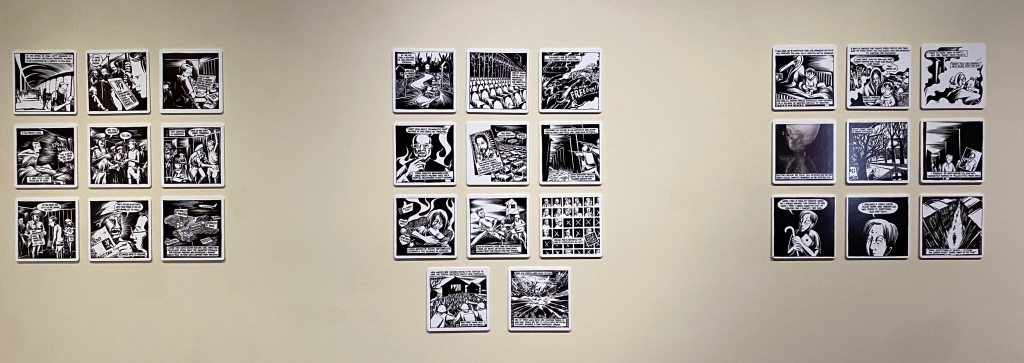One of the most ubiquitous forms of protest art is the political cartoon. Cartoons have been a part of my life for many years, and I was even invited to give a presentation on their importance at the 2018 National High School Journalism Convention in Chicago. One of the unique aspects I highlighted was the universality of cartoons, which convey messages through both drawings and words. Cartoons are able to overcome language and education barriers, allowing them to be understood by a large range of viewers.
Malik Sajad is a Kashmiri writer, cartoonist, and graphic novelist. Sajad’s career began at age 14 when he drew cartoons to accompany stories in a local newspaper. He attended Goldsmiths, University of London to study storytelling and visual art before returning to Kashmir to continue his career.
Sajad’s first graphic novel, Munnu, A Boy From Kashmir, is Sajad’s semi-autobiographical story of growing up in Kashmir. Contrasting the universal teenage tensions of family, friends, and school, are increasingly violent glimpses into the complicated world of political occupation, terrorism, and religious persecution.
I had the opportunity to read Munnu over the past week at the NCSML. Hanguls (red stag deer), an endangered species and the national animal of Kashmir, depict the Kashmiris, another ‘endangered species.’ Munnu becomes a cartoonist for a local paper at a young age and takes an interest in the news so he can draw appropriately scathing editorial cartoons. In the process, he gains a passion for his country and becomes a strong advocate for the independence of Kashmir.
Munnu was first published in England in 2015, but it took much longer to be approved for publishing in India due to its critical political content.
Displayed at the NCSML are 29 panels from Sajad’s “Op-Art” articles An 18-Month Old Victim in a Very Old Fight and A Wedding Under Curfew. Both pieces depict life under the military rule of Indian forces in Kashmir. Sajad’s cartoon panels show how life in Kashmir has been disrupted by raids, arrests, and curfews. The Indian military cut internet access in Kashmir in mid-2019 and communication has been difficult since. When sending the original artwork proved impossible, Sajad emailed scans to the US to be printed and displayed.

In a recent “art”icle for the New York Times titled “Life in Indian Controlled Kashmir: The Longest Lockdown,” Sajad commented on the way increased travel restrictions and stay-at-home orders have proven especially debilitating for those living in Kashmir, which has been in varying degrees of lockdown for the past 30 years. As much as we Americans complain about being in ‘lockdown’ for the past three months, three decades of brutally enforced military lockdown are simply unimaginable.

